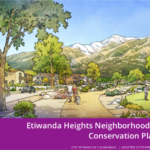Cincinnati Neighborhood Adopts Form-Based Code
How to make a big city Form-Based Code? An important effort is underway in Cincinnati, where the city’s new code was adopted in May. Although citywide, the code depends on neighborhoods to take charge of their own development. It is intended to apply to 42 neighborhoods throughout the city, making it one of the largest applications of a FBC.
The Madisonville neighborhood, in northeast Cincinnati, is now the first to have its Regulating Plan approved. Madisonville community leaders see it as a framework for revitalization. Says community leader Sara Sheets, “The opportunity to develop a FBC for Madisonville caused the community to dream bigger and to expect better.”
The new regulating plan is helping the neighborhood to focus on developing a mixed-use business district, and community leaders will work with the city to interview developers in 2014. Opticos Design, Inc. helped city and neighborhood leaders to understand form-based codes, draft the citywide code and manage neighborhood charrettes to implement the new code in the neighborhoods.
Opticos has a 2-page article with photos describing the Cincinnati approach. An article on the Building Cincinnati website gives background on the city’s coding initiative. Form-based coding in Cincinnati was spearheaded by former mayor Roxanne Qualls, who is an advisor to FBCI.
Alan Mammoser AICP is Program Director for the Form-Based Codes Institute.
















In addition to Madisonville, the consultant team at the Neighborhood Charrette prepared Regulating Plans and Vision Plans for 3 other neighborhoods: College Hill, Walnut Hills and Westwood.
While Madisonville was first, the City’s Planning staff has worked with the other 3 neighborhoods to fine-tune their Regulating Plans. The Cincinnati Planning Commission approved College Hill’s plan November 1st, and will consider Walnut Hills’ plan on November 8th.
Several other Cincinnati neighborhoods have contacted the City wishing to be the next communities to be coded.